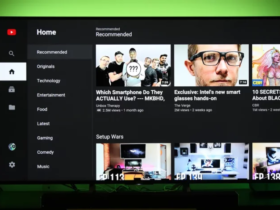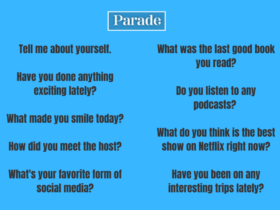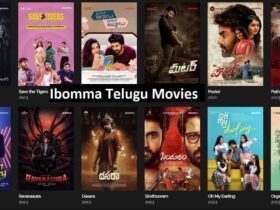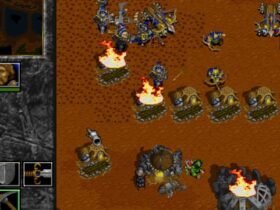In the landscape of online shopping, Vinted has carved out a niche that goes beyond mere transactions, fostering a community where fashion is recycled, reused, and reloved. Since its inception in 2008, Vinted has emerged as a frontrunner in the second-hand market, offering a platform for millions of users to buy, sell, and swap clothing items and accessories. This movement not only champions sustainable living but also democratizes fashion, making it accessible to everyone. This article delves deep into the world of Vinted, exploring its functionalities, benefits, challenges, and the significant impact it has on both consumers and the environment.
The Genesis of Vinted
Vinted’s journey began with a simple idea: to provide a space where people could clear out their wardrobes and find new homes for their unused clothes. What started as a local initiative in Lithuania quickly gained momentum and expanded globally. Today, Vinted operates in over a dozen countries, empowering users to engage in an eco-conscious fashion exchange. This remarkable expansion reflects a growing awareness and demand for sustainable fashion practices, positioning Vinted at the heart of this transformative wave.
Platform Features and User Experience
Vinted distinguishes itself through a user-friendly interface and a variety of features designed to enhance the buying and selling experience. Users can easily list their items by uploading photos, adding descriptions, and setting prices. The platform also offers robust search functionalities, making it easy for buyers to find exactly what they’re looking for. One of the key appeals of Vinted is its community-driven approach, where users can follow each other, share listings, and engage in forums to discuss fashion trends, sustainability, and more.
Championing Sustainability and Ethical Fashion
The rise of Vinted is emblematic of a larger shift towards sustainability in the fashion industry. By facilitating the circulation of second-hand items, Vinted not only extends the lifecycle of clothing but also significantly reduces waste and the demand for new production. This approach challenges the fast-fashion model, advocating for a more ethical and environmentally friendly way of consuming fashion. Vinted’s success is a testament to the changing attitudes of consumers who are increasingly looking for ways to shop responsibly.
Empowering Consumers with Choice and Accessibility
Vinted offers an inclusive platform where anyone can participate in the second-hand market, regardless of their budget or style preferences. This accessibility is a game-changer, allowing people from diverse backgrounds to engage with fashion in a way that is financially and environmentally sustainable. Moreover, Vinted’s model promotes a circular economy, where items are continuously reused and recycled, minimizing the environmental impact of fashion consumption.
Overcoming Challenges: Quality Control and User Trust
Despite its numerous benefits, Vinted faces challenges related to quality control and maintaining user trust. The nature of peer-to-peer transactions means that the condition and authenticity of items can vary. To address this, Vinted has implemented a robust feedback and rating system, allowing users to review their experiences and flag issues. Additionally, the platform offers buyer protection services to ensure transactions are as secure and transparent as possible. These measures are crucial in building and maintaining trust among Vinted’s user base.
The Social Impact of Vinted: Beyond Fashion
Vinted’s impact extends beyond the realm of fashion, fostering a sense of community and connection among its users. The platform encourages people to think critically about their consumption habits and the life cycle of their possessions. Through forums and social features, Vinted facilitates conversations around sustainability, encouraging users to share tips, experiences, and support each other in their journey towards more conscious consumption. This community aspect is a powerful force in spreading awareness and inspiring action towards a more sustainable future.
Future Directions: Innovation and Expansion
As Vinted continues to grow, the platform is exploring new ways to innovate and enhance the user experience. This includes implementing advanced technologies to improve item listings and search functionalities, as well as expanding into new markets and product categories. Vinted’s commitment to innovation is driven by its mission to make second-hand shopping the first choice worldwide. The platform’s ongoing expansion is not only a sign of its success but also an indication of the increasing global appetite for sustainable fashion solutions.
Navigating the Evolving Landscape of Second-Hand Shopping
The success of Vinted is indicative of a broader trend towards second-hand shopping and sustainability in the fashion industry. As consumers become more environmentally conscious, platforms like Vinted play a crucial role in facilitating the shift towards more sustainable consumption patterns. However, the path forward involves addressing challenges related to scalability, quality control, and ensuring a positive user experience. By continuing to innovate and adapt, Vinted can sustain its momentum and lead the charge in transforming the fashion industry for the better.
Conclusion
Vinted stands as a beacon of innovation and sustainability in the fashion industry, redefining how we think about shopping and ownership. Through its platform, Vinted has created a vibrant community of users who are united in their commitment to sustainable fashion. By making second-hand shopping accessible, enjoyable, and fashionable, Vinted is not just changing wardrobes; it’s changing mindsets. As we look to the future, the trajectory of Vinted offers hope and inspiration for a more sustainable and ethical fashion industry, where the value of clothing is measured not just in terms of price, but in terms of the stories they tell and the impact they have on the world.




















